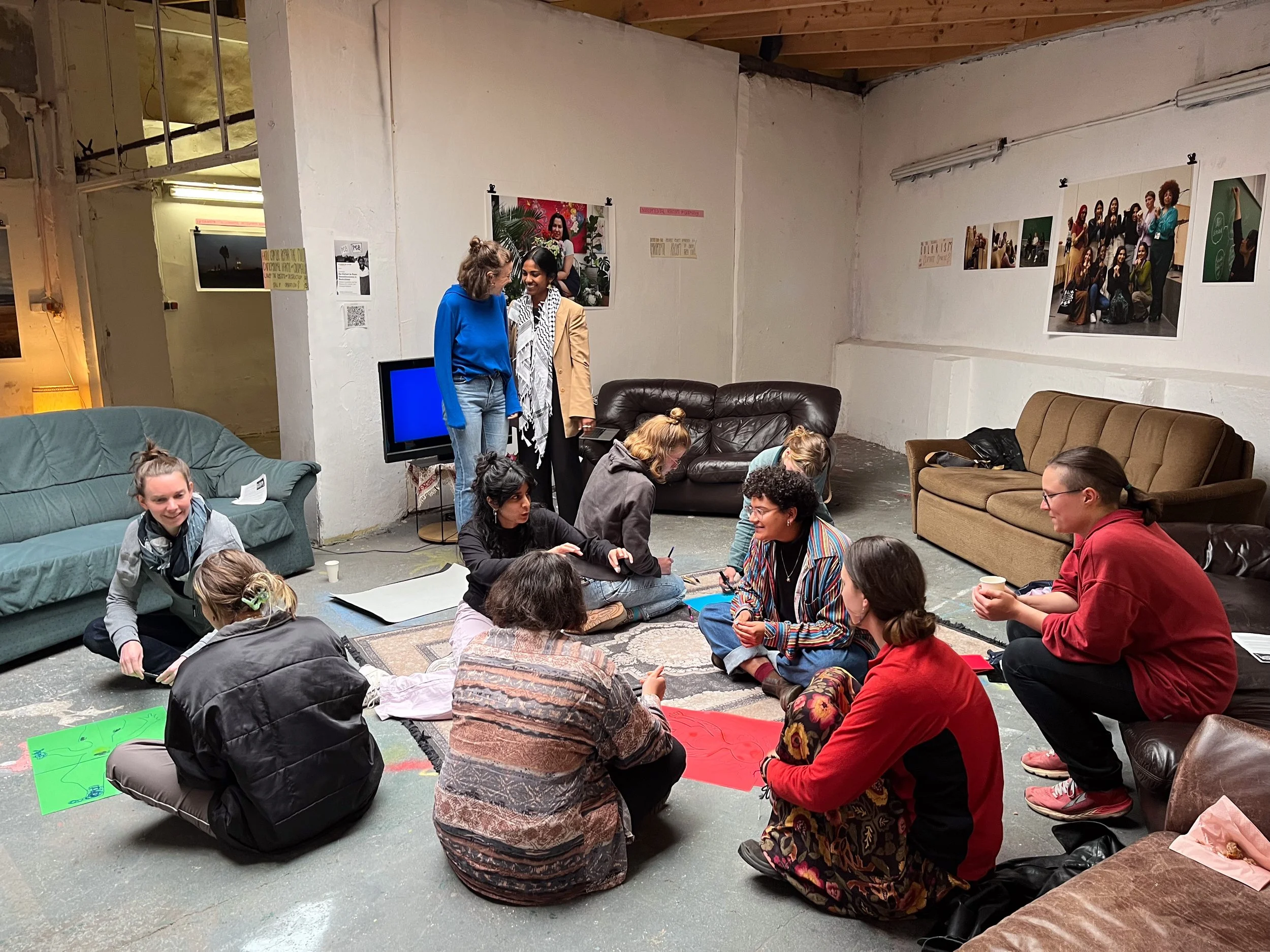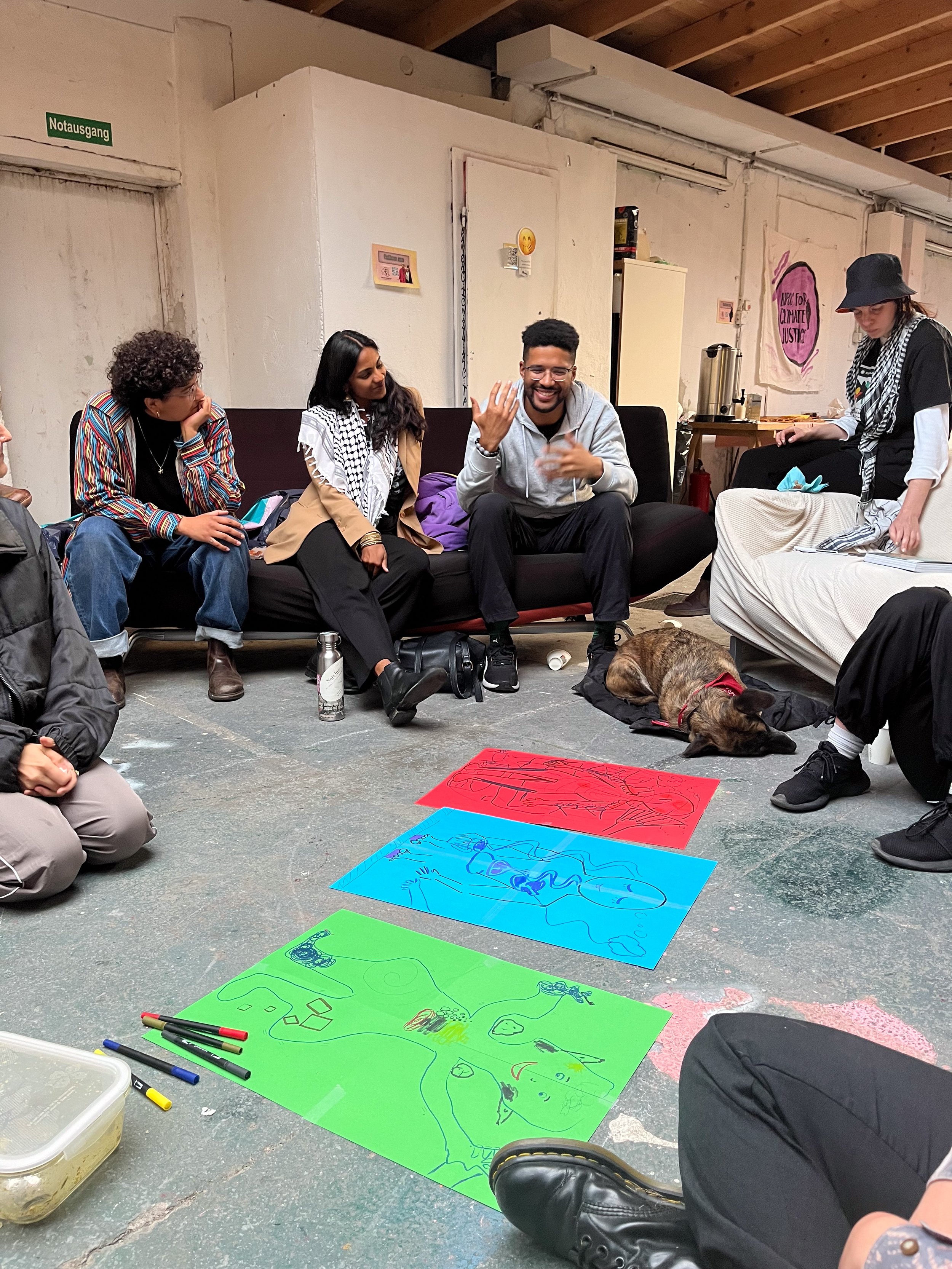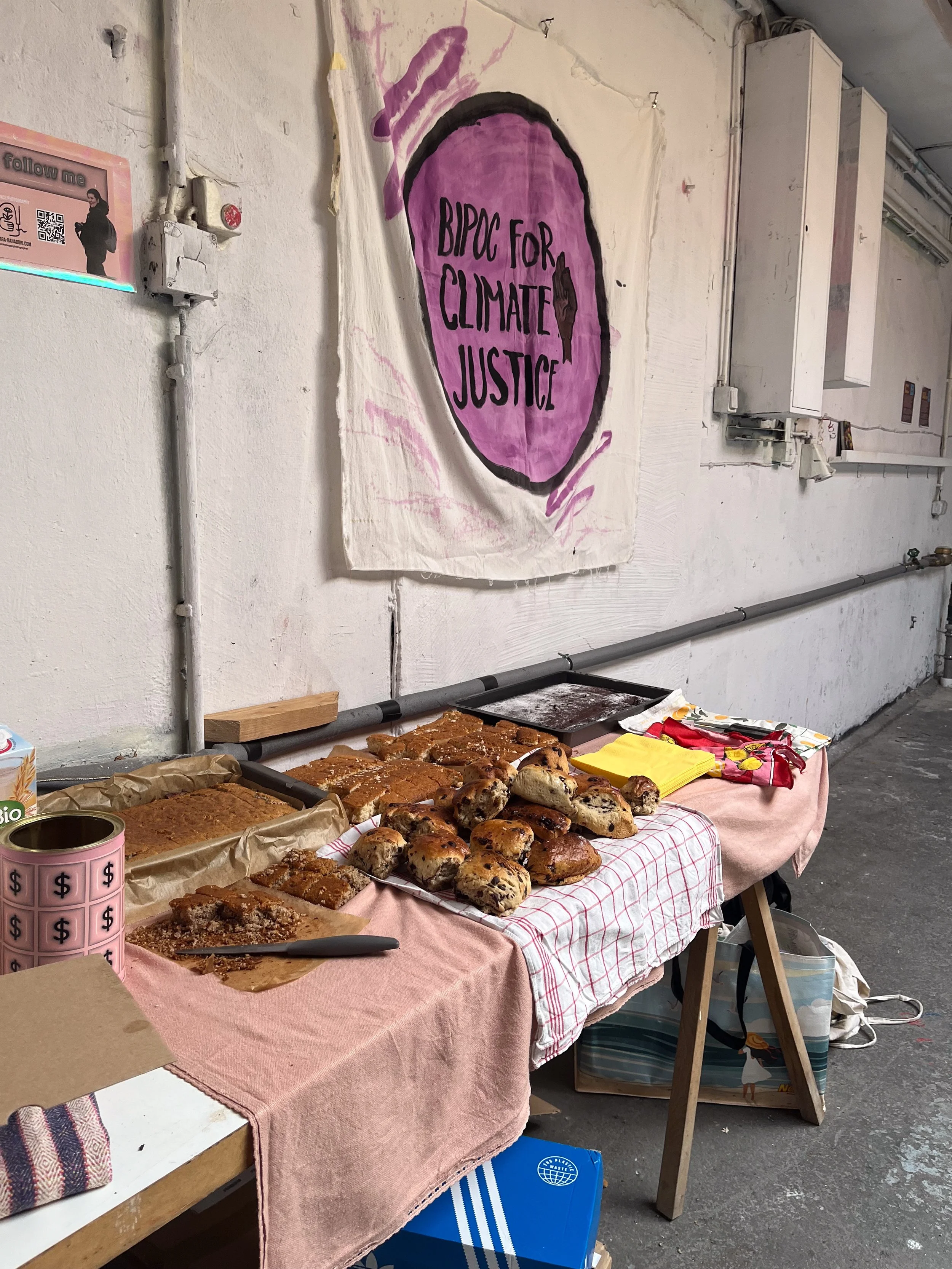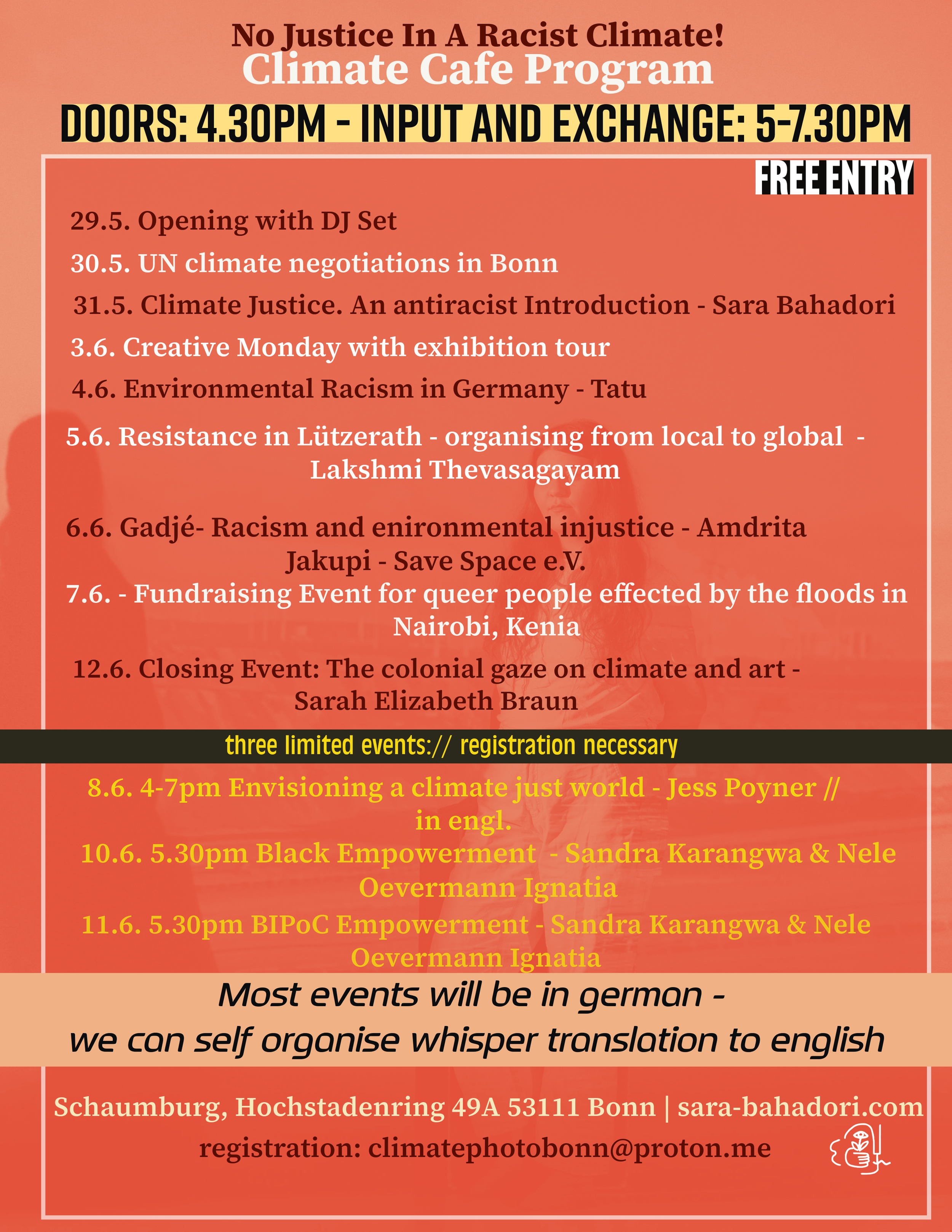Photocredit: Sören Meffert
Read the accompanying brochure for the exhibition here (English) or here (German)
The photo exhibition “No Justice in a Racist Climate - How Colonial is Your Gaze on Climate Justice?” offers an easy entry point to a decolonial perspective on the climate crisis, highlighting how current states of emergency are deeply rooted in and perpetuated by colonial and white-dominant worldviews.
This is a project aimed at making racism and colonial continuity visible - also within the white-dominated German climate movement - and, ideally, to encourage self-reflection of any visitor. On the occasion of the UN climate negotiations in Bonn (SB), many international activists (MAPA – Most Affected People and Areas) were in the city. To raise more awareness and mobilize people for their actions, accompanying events were organized as part of the exhibition to provide a low-threshold opportunity for a broader audience to engage with “decolonial” climate justice approaches.
The core of the exhibition was the opportunity for encounter and engagement with the topic. Through daily open "climate cafés" with snacks and drinks, an accessible point of entry to the content was created. A “bridge” emerged between the local Bonn city-community and the climate movement, which simultaneously set up a protest climate camp near the UN campus in Bonn to critically accompany the UN processes.
Because the white-dominated climate movement is often organized in a very exclusive way and tends to overlook the diverse lived realities of people affected by intersectional discrimination, this artistic and shared space for encounter was intended to serve as a corrective by creating real opportunities for participation. It was particularly aimed at encouraging multiply marginalized people in Bonn and beyond to develop a critical understanding of the climate crisis. One goal was to empower these individuals as new multipliers for the climate justice movement and to lay a foundation for long-term local networking, especially for BIPoC, beyond the exhibition itself.
To create this kind of intersectional representation, all events were led by BIPoC FLINTA* of the decolonial string of the German climate justice movement. Local organizing groups, especially from migrant communities, were included and approached in advance which lead to a high number of local visitors.
Have a look around the exhibition space:



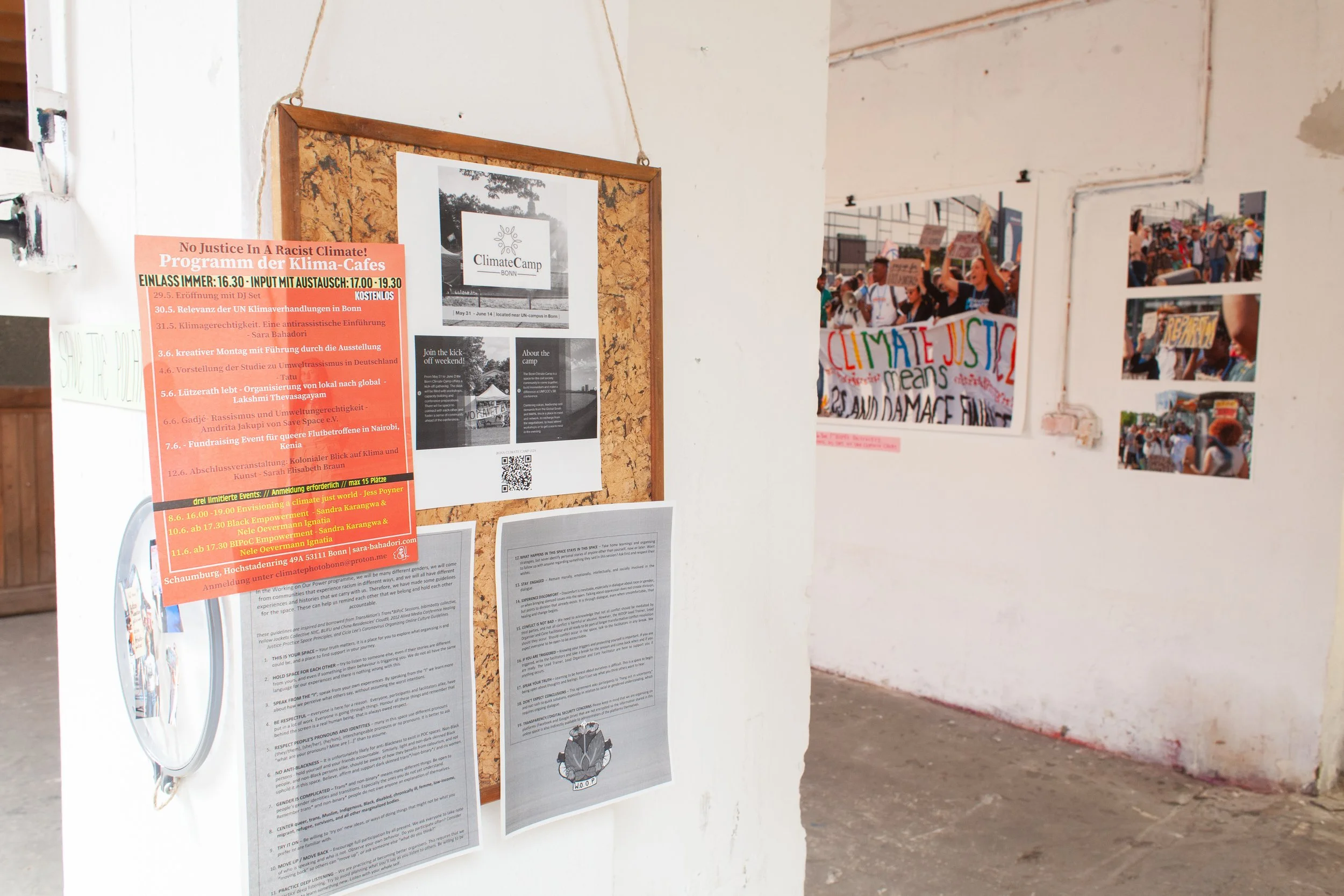




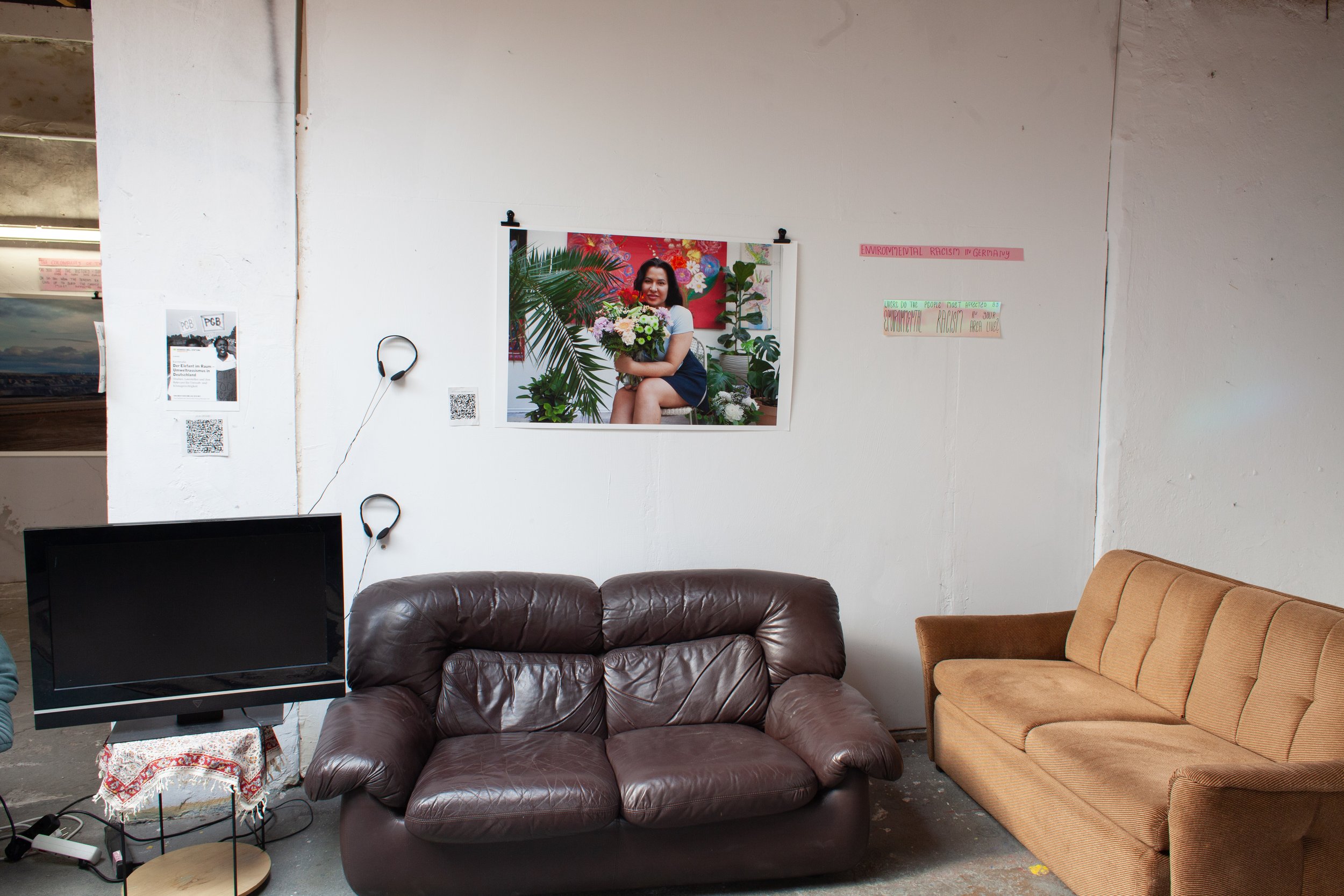



The space is not chic at all - that was the whole point. The conventional art galleries are full of intentional social barriers - esp. racism and classism. This off-space was the perfect venue to feel comfortable in being yourself, without the pressure of performing in an expected posh way. To get curious or be clumsy without security to tell you off! That was really important to me, as I think institutional art spaces are factories of collective loneliness, coloniality and white supremacy. I often feel drained and as if I don’t belong in the space. By all cost I wanted to transform this feeling. This is why I greeted everyone with self made vegan cake and black tea with oat milk, who entered the space.
When was the last time you left an exhibition and felt the buzz of being alive and having met a new person to share your thoughts with?
Have a closer look..!

























Throughout the exhibition the visitor is invited to critically reflect on themselves
how colonial is your gaze?
Which aspects of social justice are underdiscussed?
What implication does that have for discussions around the climate crisis?
How can we decolonize our gaze on climate justice from a Global North point of view?
To be still and to become a spectator of ones inner thoughts and initial associations is one key aspects of noticing eurocentristic thought patterns and biases.



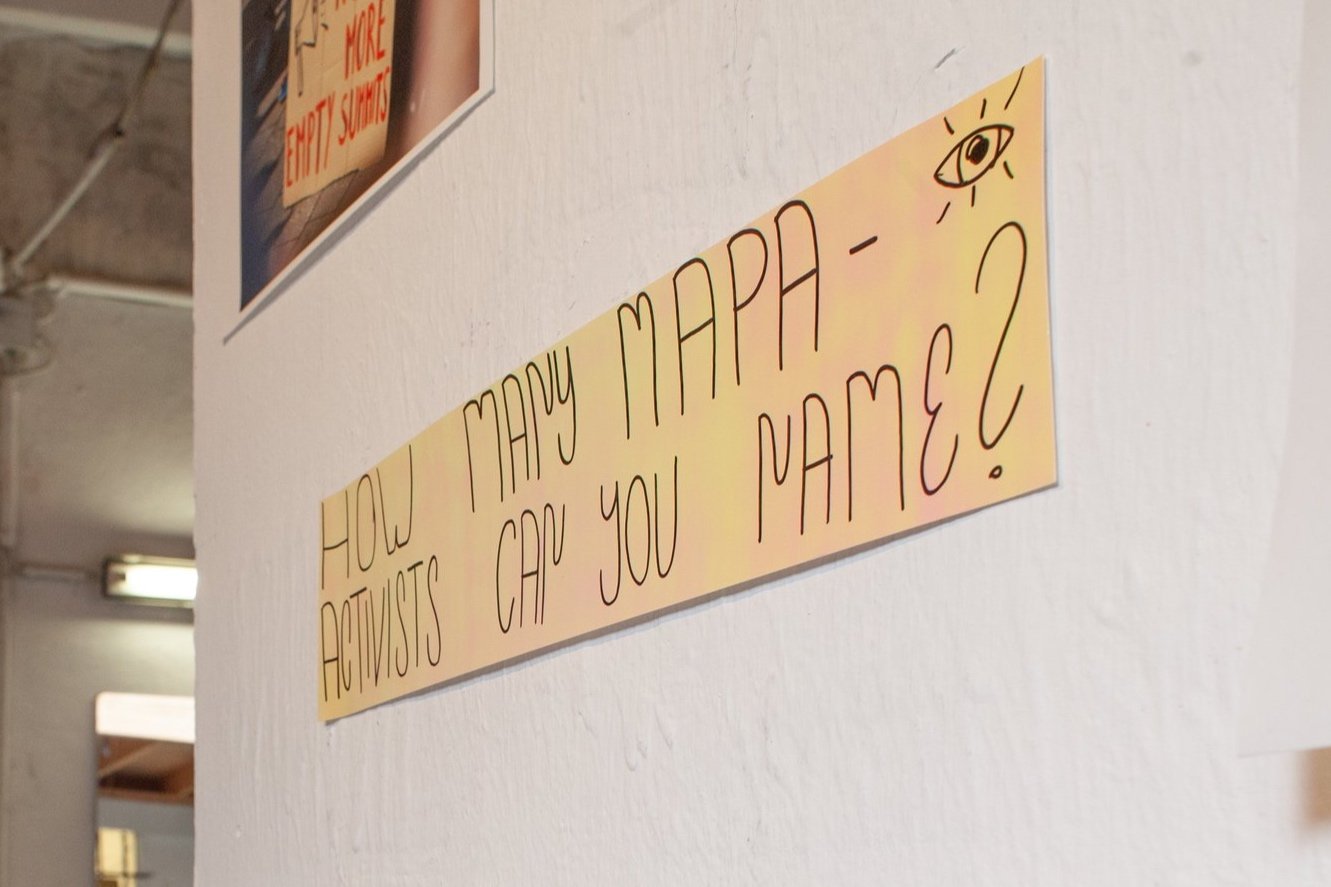
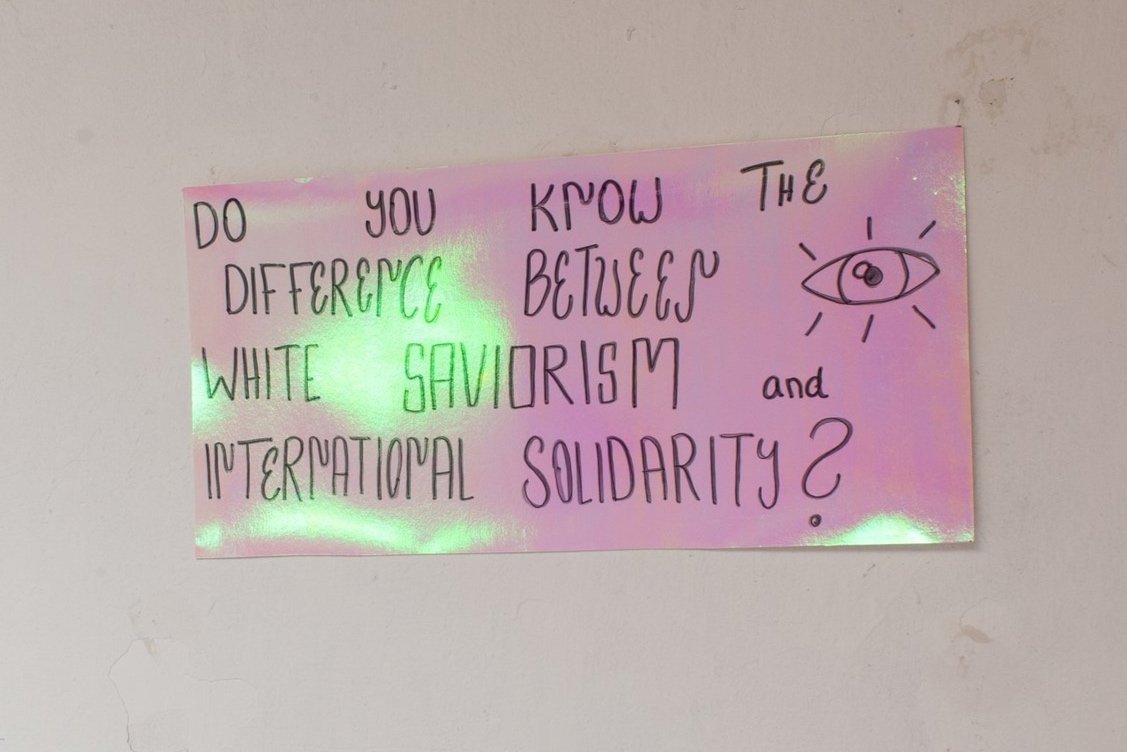


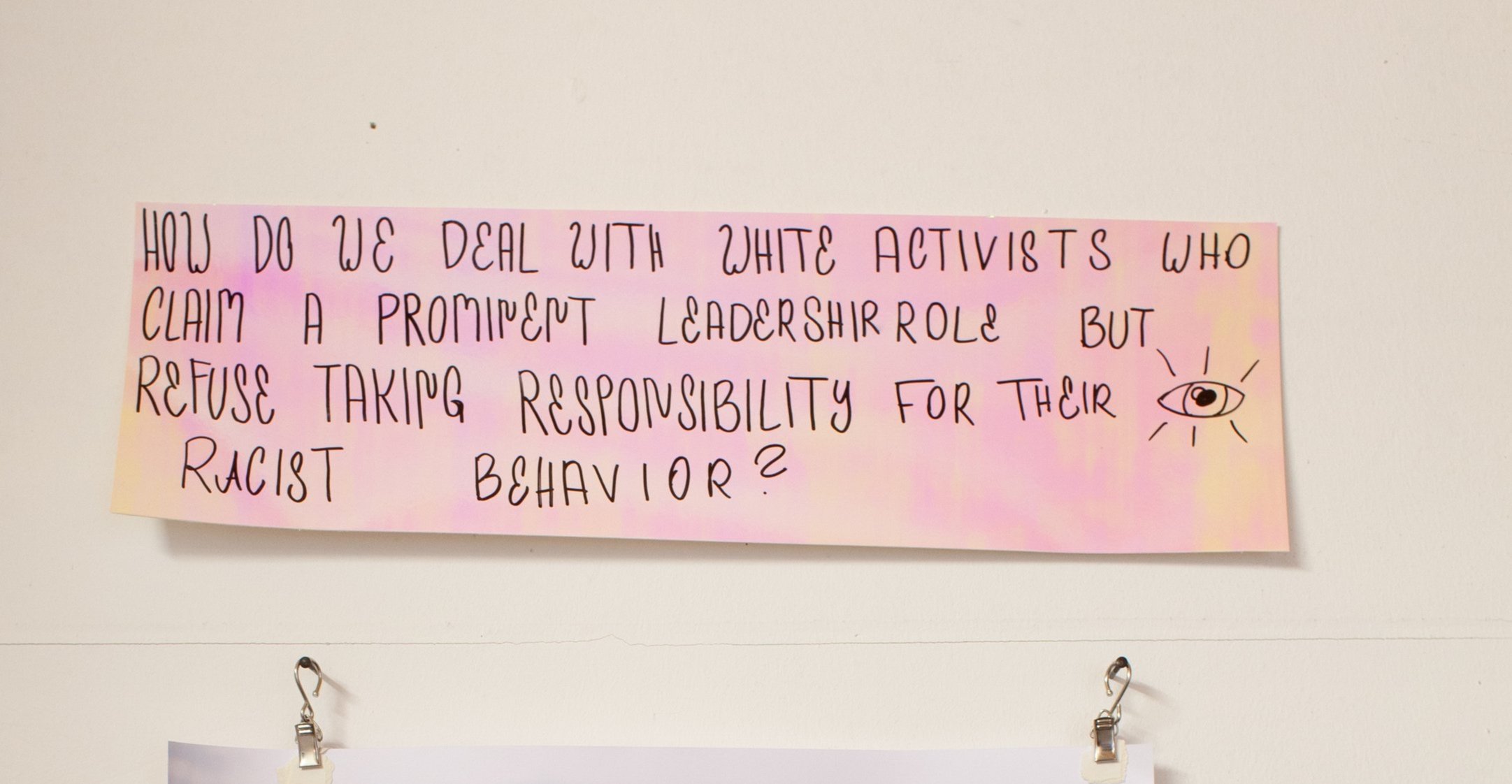
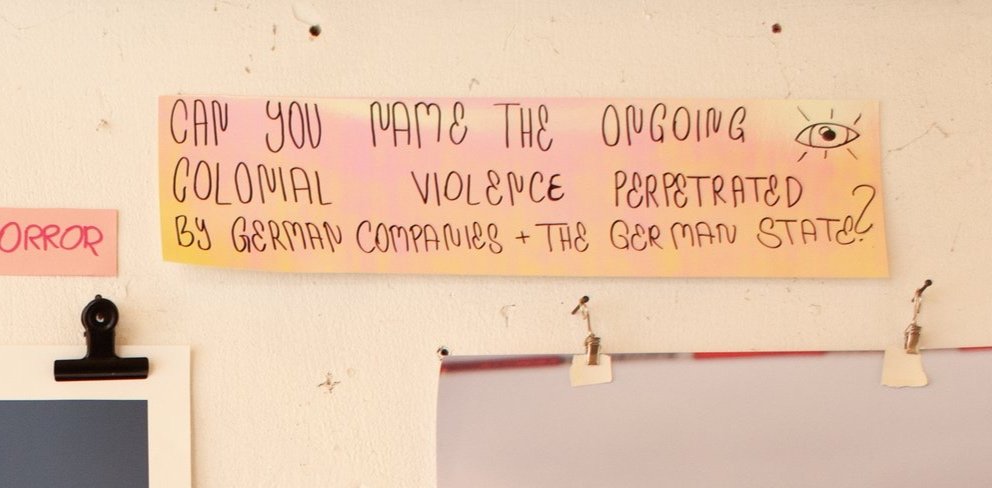

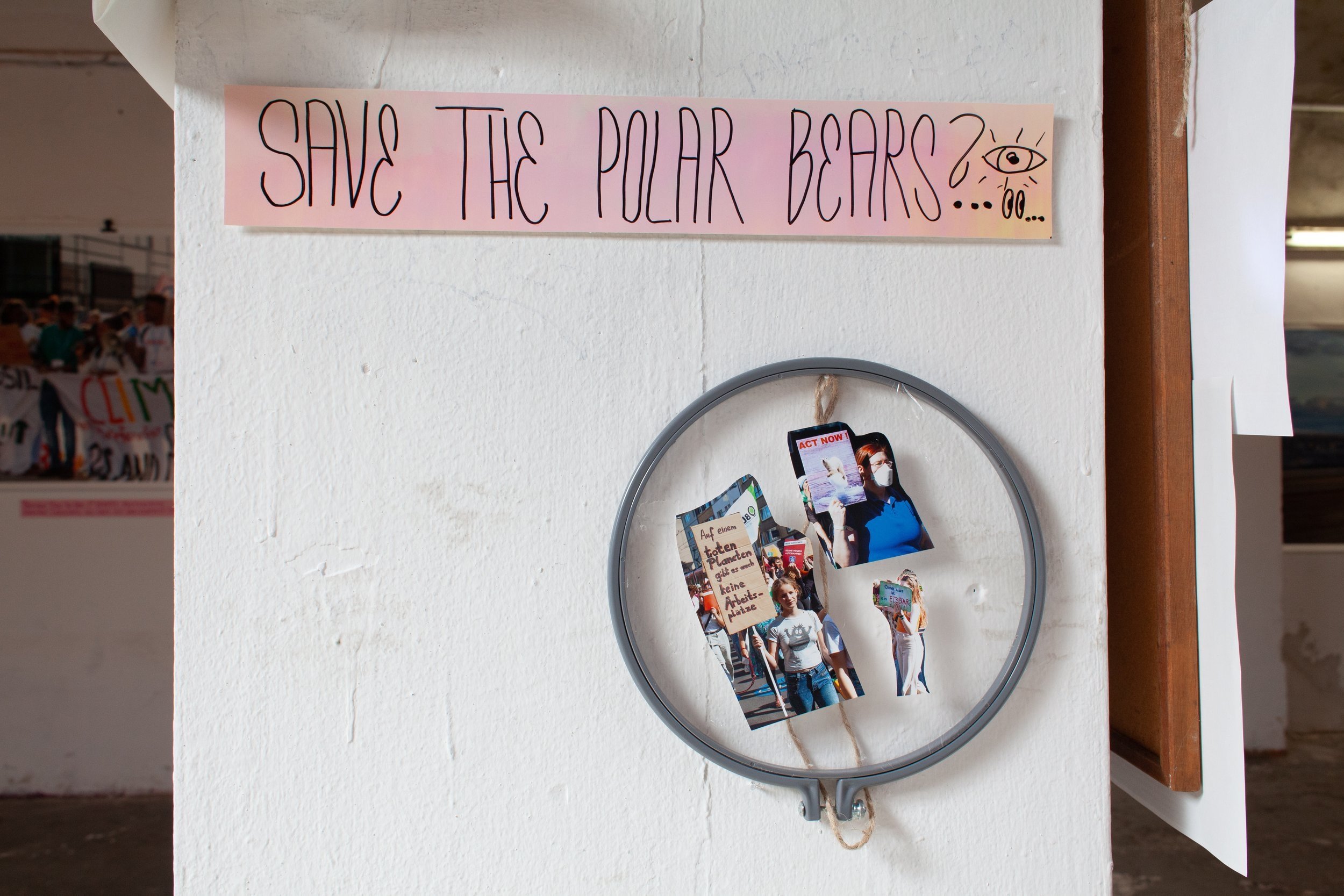

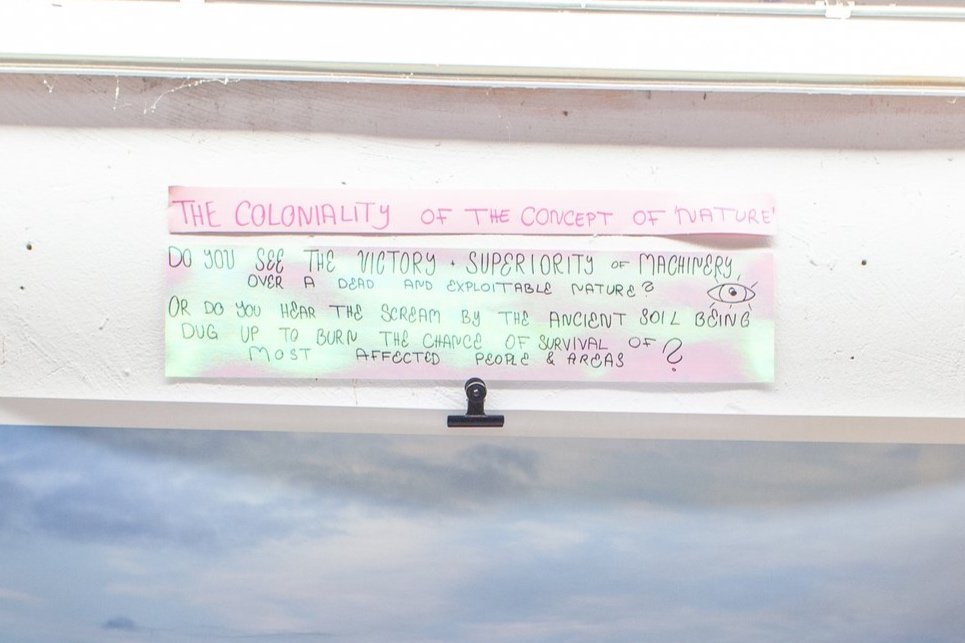

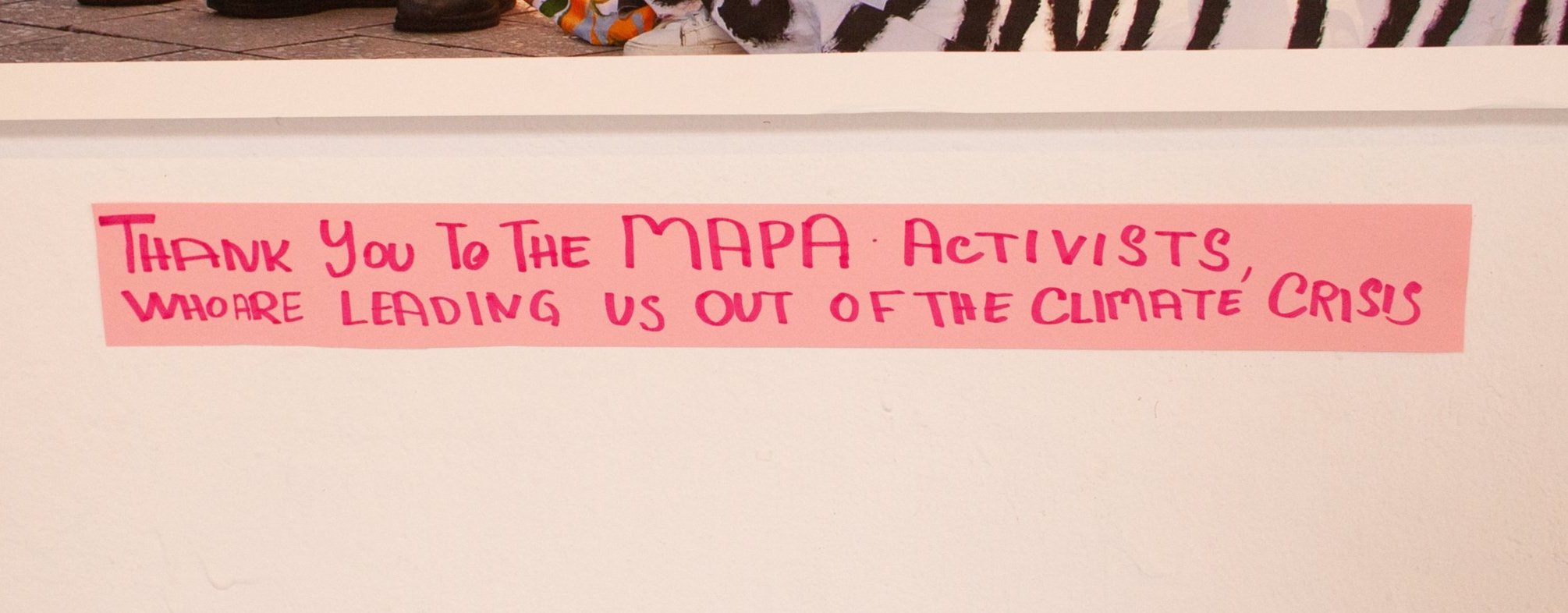
One of the most important pieces of the exhibition is the interview about environmental racism against Sinti and Roma in Germany.
I interviewed Amdrita Jakupi - the chair of save space e.V.
an organization for intersectional empowerment for Sinti and Roma and BIPoC.
Listen for yourself what she had to say:
Read the study about environmental racism against Sinti and Romani people in Germany, Amdrita mentions here
“REFLECTIONS:
For me, art is not what hangs on walls, to be viewed individually and then mentally taken home in isolation with one’s own thoughts and feelings. For me, art means bringing people together who may not yet know each other. The connecting element is that they have viewed the same artwork. On this basis, even strangers can find an opportunity for encounter. This requires an intersectionally sensitive, holistically thought-out, and needs-oriented space so that from the isolation of art consumption, a collective moment of reflection and connection can emerge.”
The exhibition was all about centering decolonial Perspectives.
Over the two weeks of the exhibition duration - there was a programme of climate cafes with top tier feminist experts from the deolonial wing of the German climate movement:
What does it mean to decolonize the gaze on Greta Thunberg?
It was really special to see how Greta Thunberg presence was a real life test of how people would center or decenter white famous climate activists. Greta was being made into a climate hero (or rather a savior) by the Western media over the last years, by pushing her person to become the face of the global climate movement. In my perception, putting people on such a high pedestal it is a way of dehumanizing a person, because the full humanhood of being able to be flawed, maybe not knowing all the answers to every issue and not always being available to be consumed by spectators is being denied. That in itself is a way of reinscribing whiteness into the notion of who is being perceived of being the most relevant subject of the climate debate - a white child form the global north - instead of a child of a MAPA region. That distortion is one of the core social issues underlying the climate crisis.
What does it mean to decolonize the gaze on Greta Thunberg? Of course everyone recognized her and was initially excited, but nobody asked for pictures. We all knew that in us recognizing the colonial power structures, that made her famous, would mean, that celebrating her or treating her like a celebrity would reproduce the structure. Instead there was respectful and a rehumanizing way of interacting with each other. She was also just a participant of the climate cafe like everyone else in the space, even though the social hierarchies of perceived importance were not fully removed, we took a step in the right direction by deconstructing the patterns in the moment they occurred.
It was really special to see the MAPA people, I photographed the year before in Bonn, see themselves represented in my photography exhibition!
Every day, I made fresh vegan cake in the morning to greet every visitor with. But on the last day, I made my world famous vegan baklava to celebrate the end of the exhibition.
Some impressions of the Climate Cafes:




